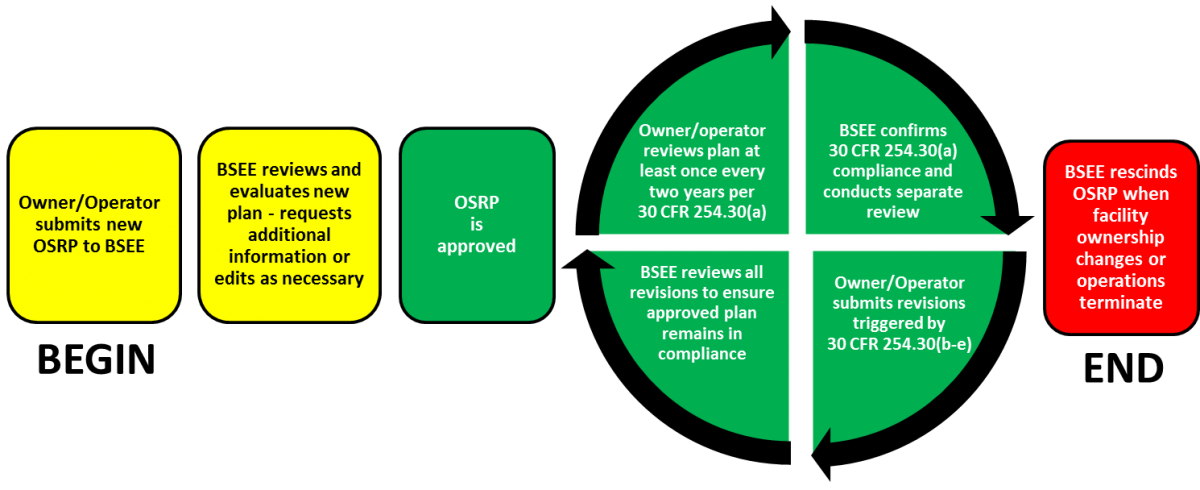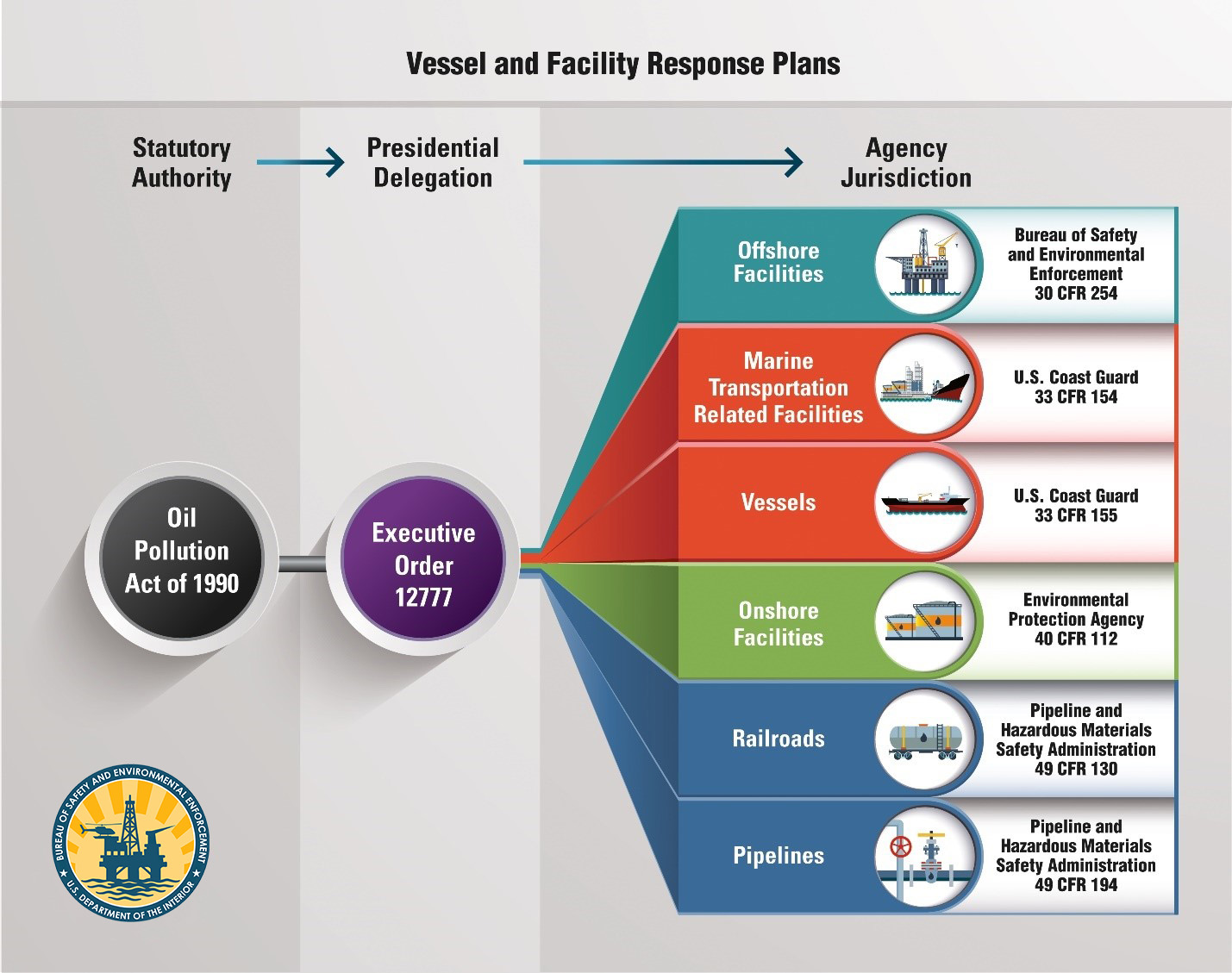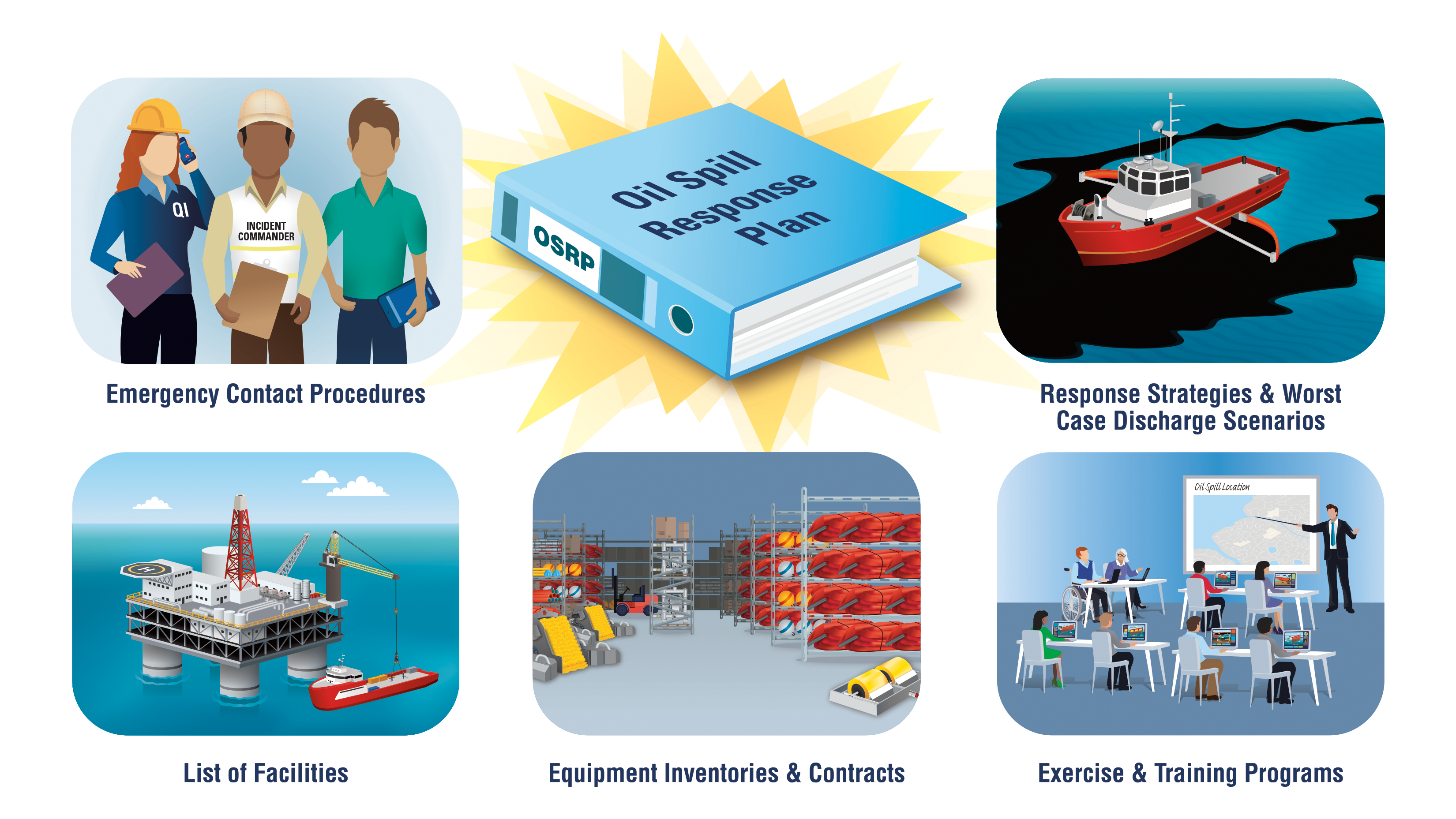BSEE’s oil spill regulatory authority, which comes from The Federal Water Pollution Control Act (Title 33 U. S. Code § 1321), as amended by sections 4202(a), (b)(4) and 5005 of the Oil Pollution Act of 1990, establishes the requirements for vessel and facility oil and hazardous substance spill response plans and discharge-removal equipment. All owners and operators of offshore facilities seaward of the coastline that handle, store, or transport oil must, with some exceptions, have an approved Oil Spill Response Plan (OSRP) before operations begin, and must operate their facilities in accordance with that OSRP. BSEE’s Oil Spill Preparedness Division (OSPD) is responsible for reviewing, approving, and rescinding OSRPs to ensure that the plan holder is prepared to quickly and effectively respond to a worst-case discharge from a facility to the maximum extent practicable.
An OSRP is an important contingency planning document. It contains numerous details including, exercise and equipment testing procedures, spill response strategies and tactics, spill command and control procedures, and emergency contact information.
OSRPs are complex documents and many exceed 500 pages in length. BSEE personnel must review numerous details within each section and appendix to verify that the information is correct, current, and in compliance with the requirements of 30 CFR Part 254, and that the OSRP, taken as a whole, adequately demonstrates that an owner/operator is prepared to effectively respond to a spill from their offshore facility. Ultimately, all regulatory actions taken by OSPD personnel are connected to OSRPs.
BSEE has published additional guidance and clarification on OSRP requirements through several Notices to Lessees and Operators (NTLs) documents. Key NTLs affecting OSRPs can be found on main landing page for the Oil Spill Preparedness Program. All of BSEE’s NTLs can be found on the Notice to Lessees (NTLs) page.
As required by 30 CFR Part 254.5(b), plan holders are reminded that OSRPs should be consistent with the provisions of the National Contingency Plan, applicable Area Contingency Plans (ACPs), and Regional Contingency Plans (RCP), including the sensitive species and habitats that may be listed. As per 40 CFR Part 300.210(c)(4)(i), each ACP should include a detailed annex containing a Fish and Wildlife and Sensitive Environments Plan that provide[s] the necessary information and procedures to immediately and effectively respond to discharges that may adversely affect the environment. Applicable ACPs or RCPs can be found through the National Response Team (NRT) Region Map. The NOAA Fisheries website also contains useful information for incorporating marine life and resource protection strategies in OSRPs.
Oil spill contingency planning requirements and their related activities for various business sectors were borne from legislation enacted after the 1989 grounding of the tank vessel Exxon Valdez in Alaska. BSEE is responsible for overseeing industry compliance with these regulations for offshore facilities.
The graphic below summarizes the typical life cycle of an OSRP. BSEE Preparedness Analysts work with industry plan holders at all stages including the initial submission of a plan for approval, its routine maintenance after approval, and its final termination.



(Click to expand images)






